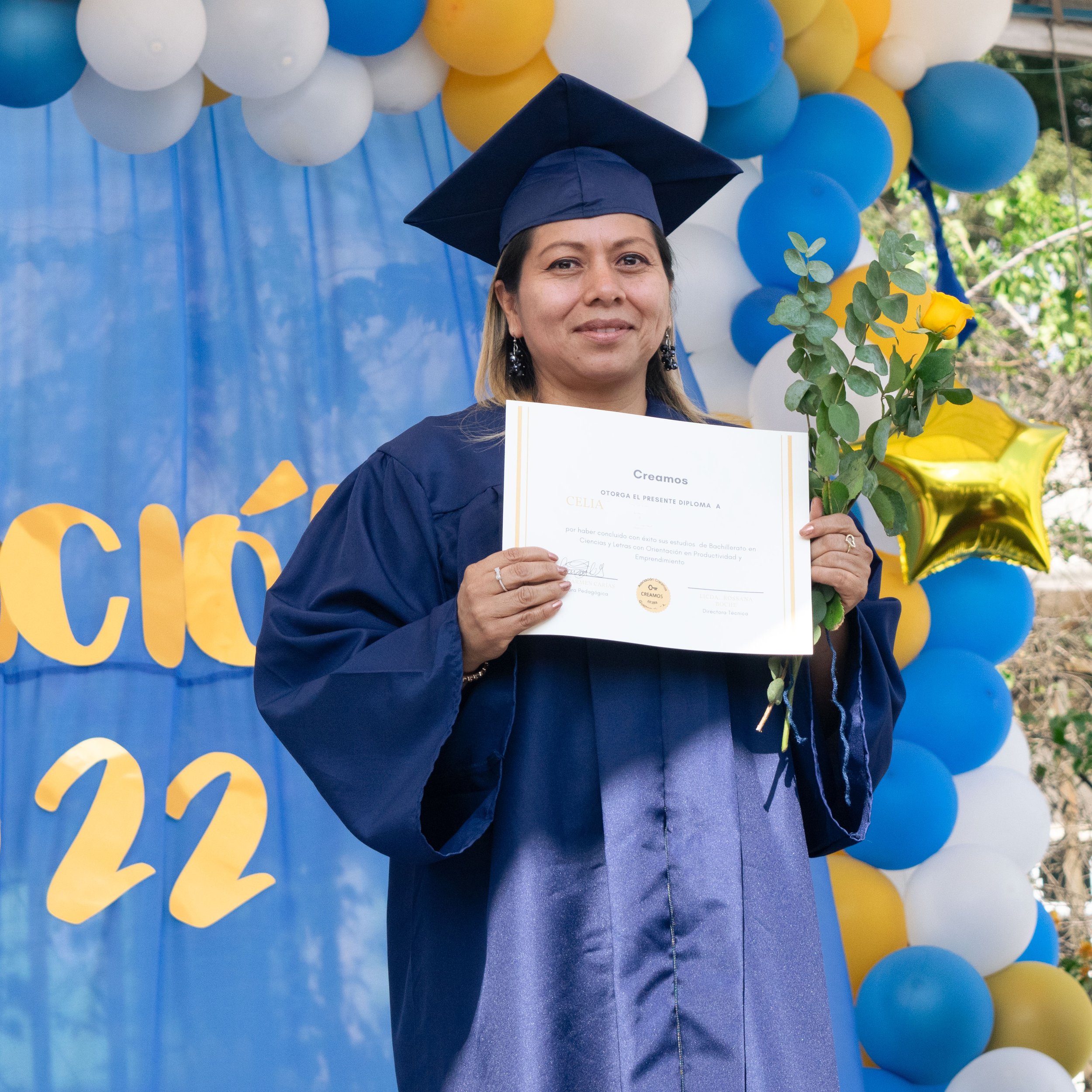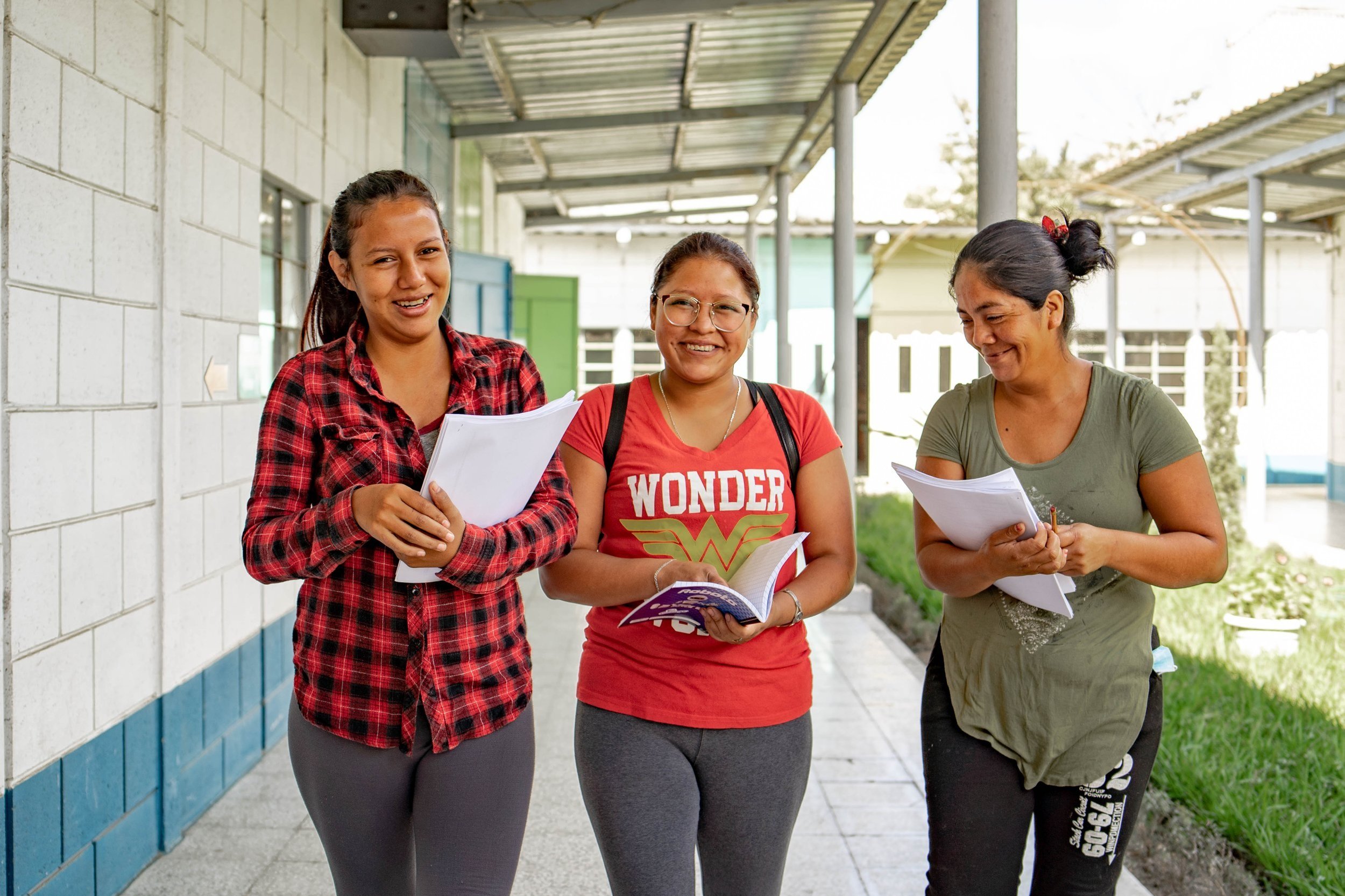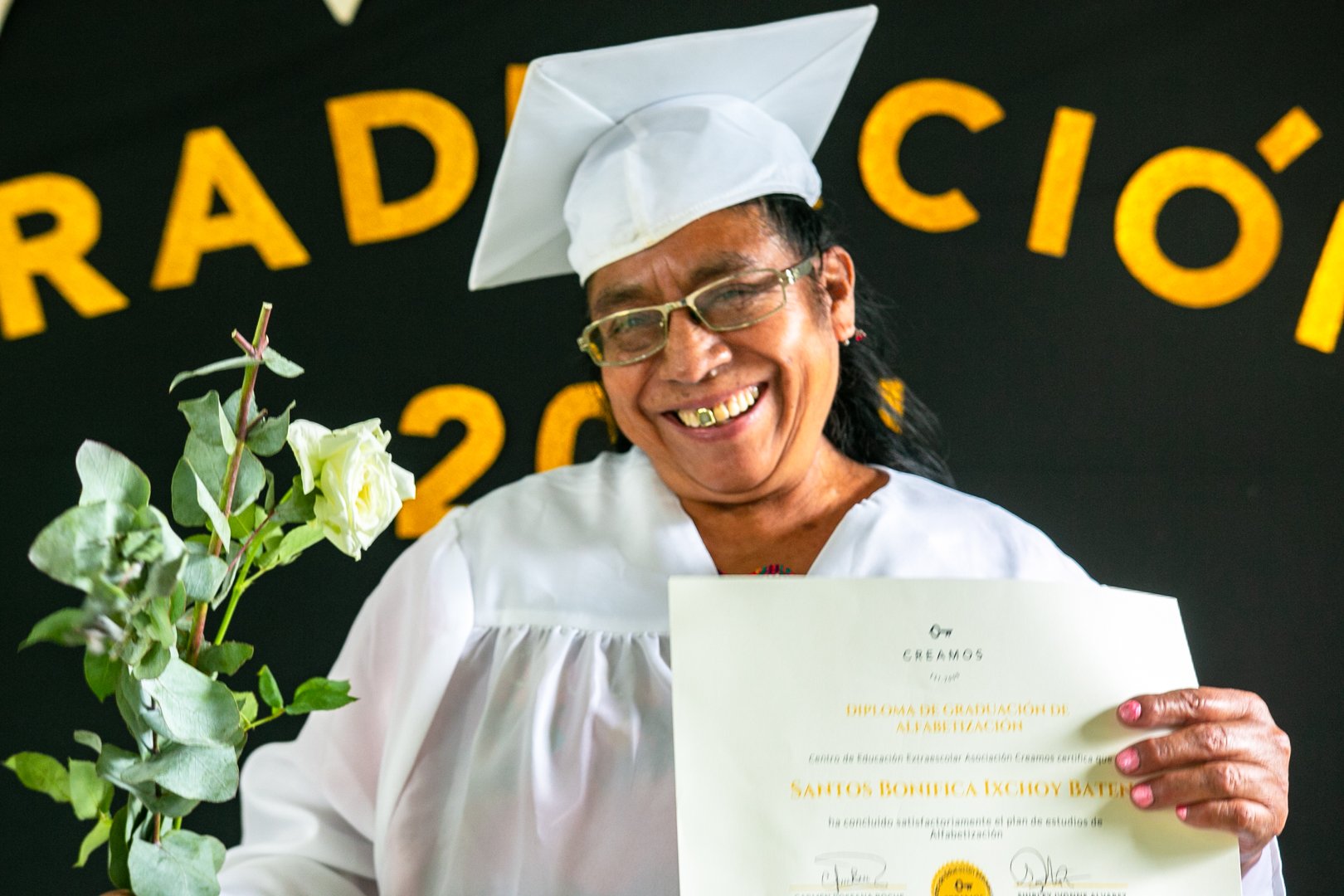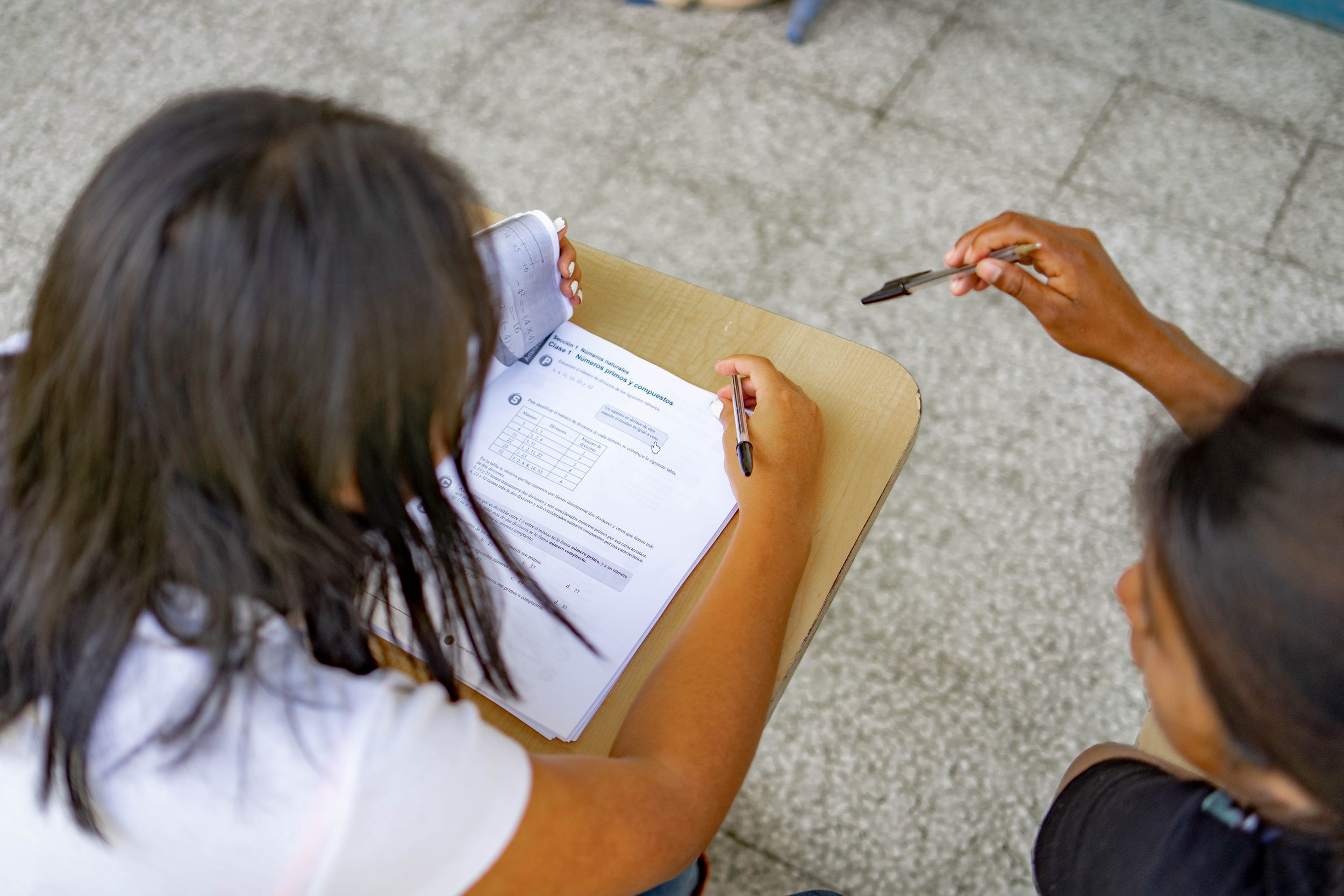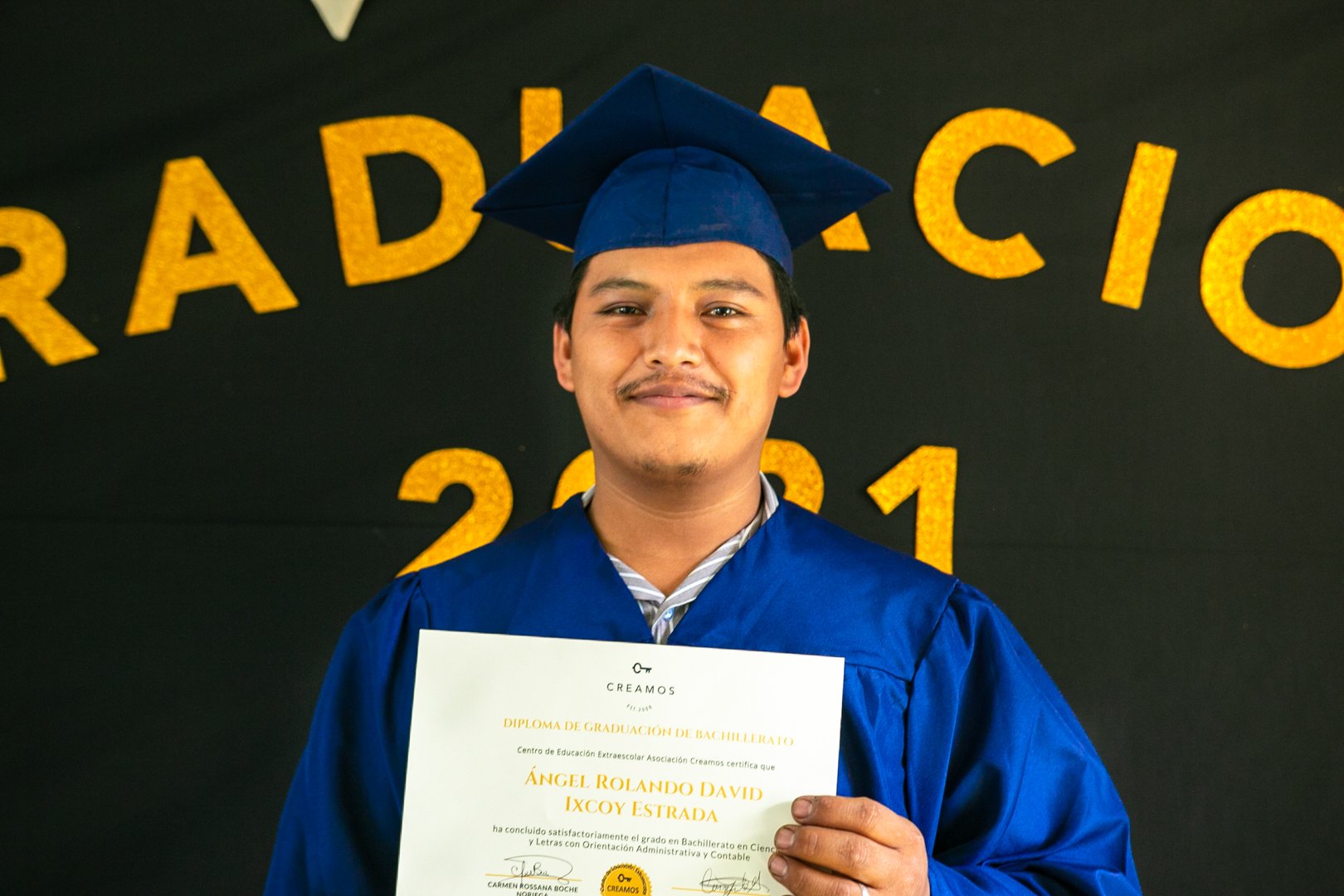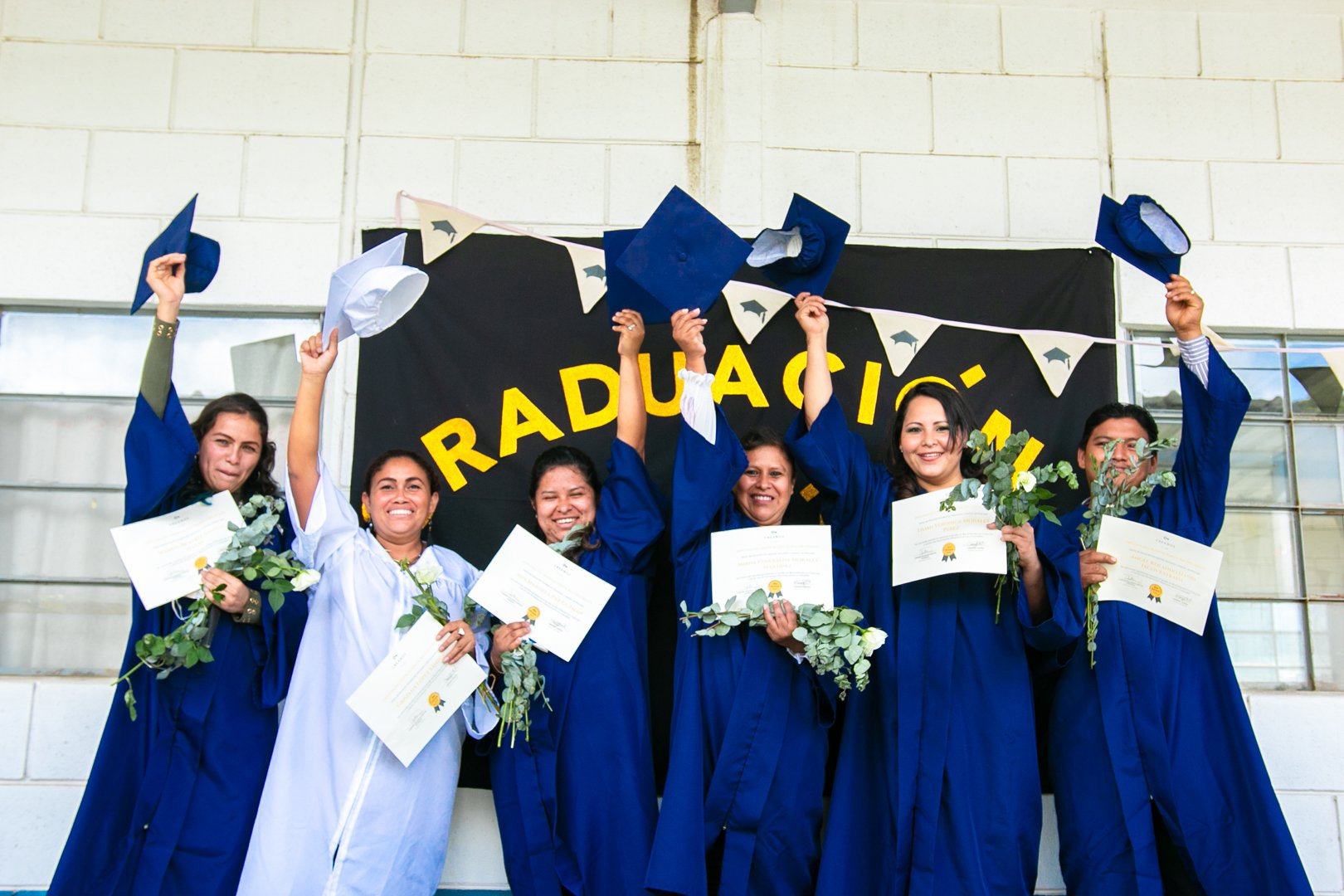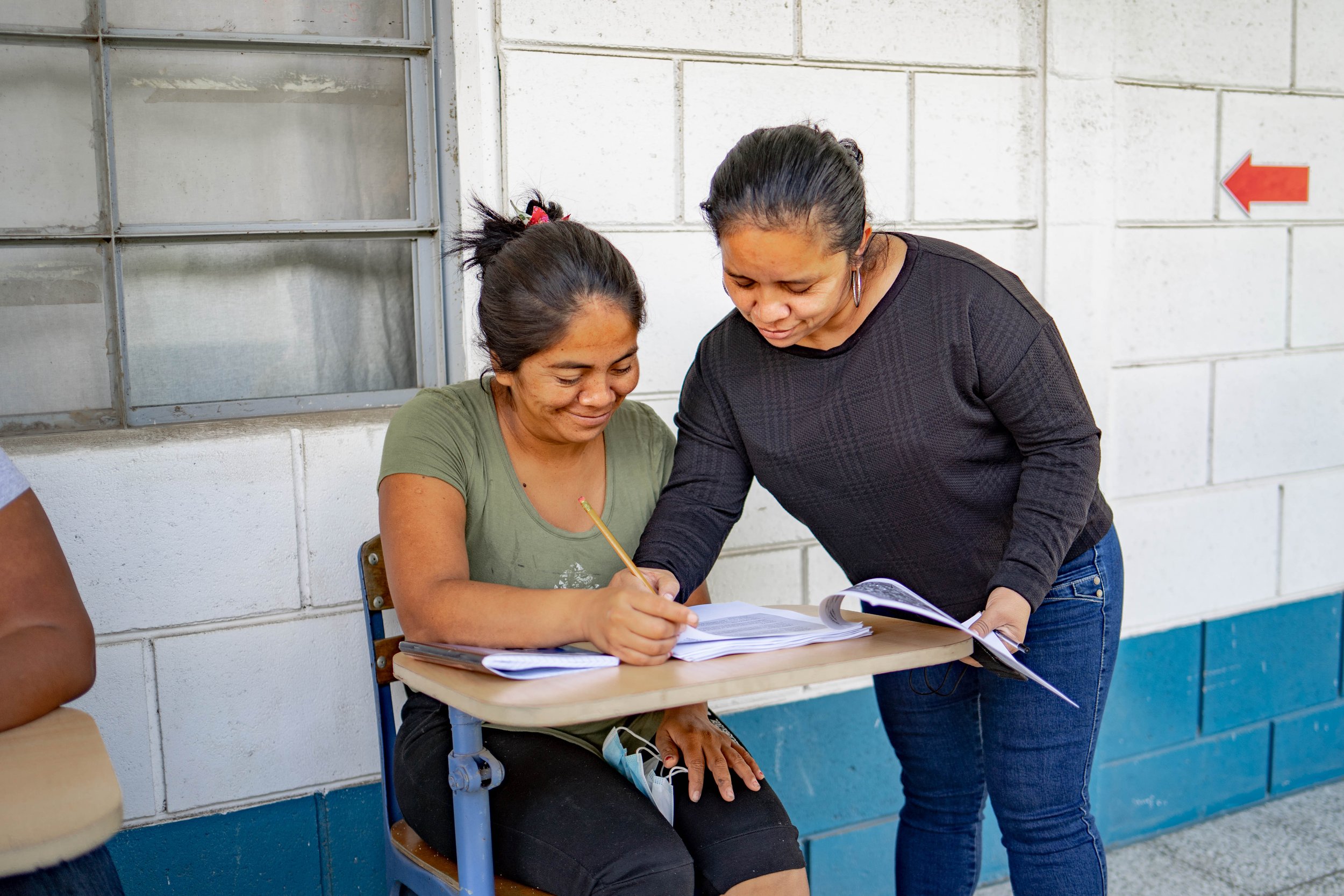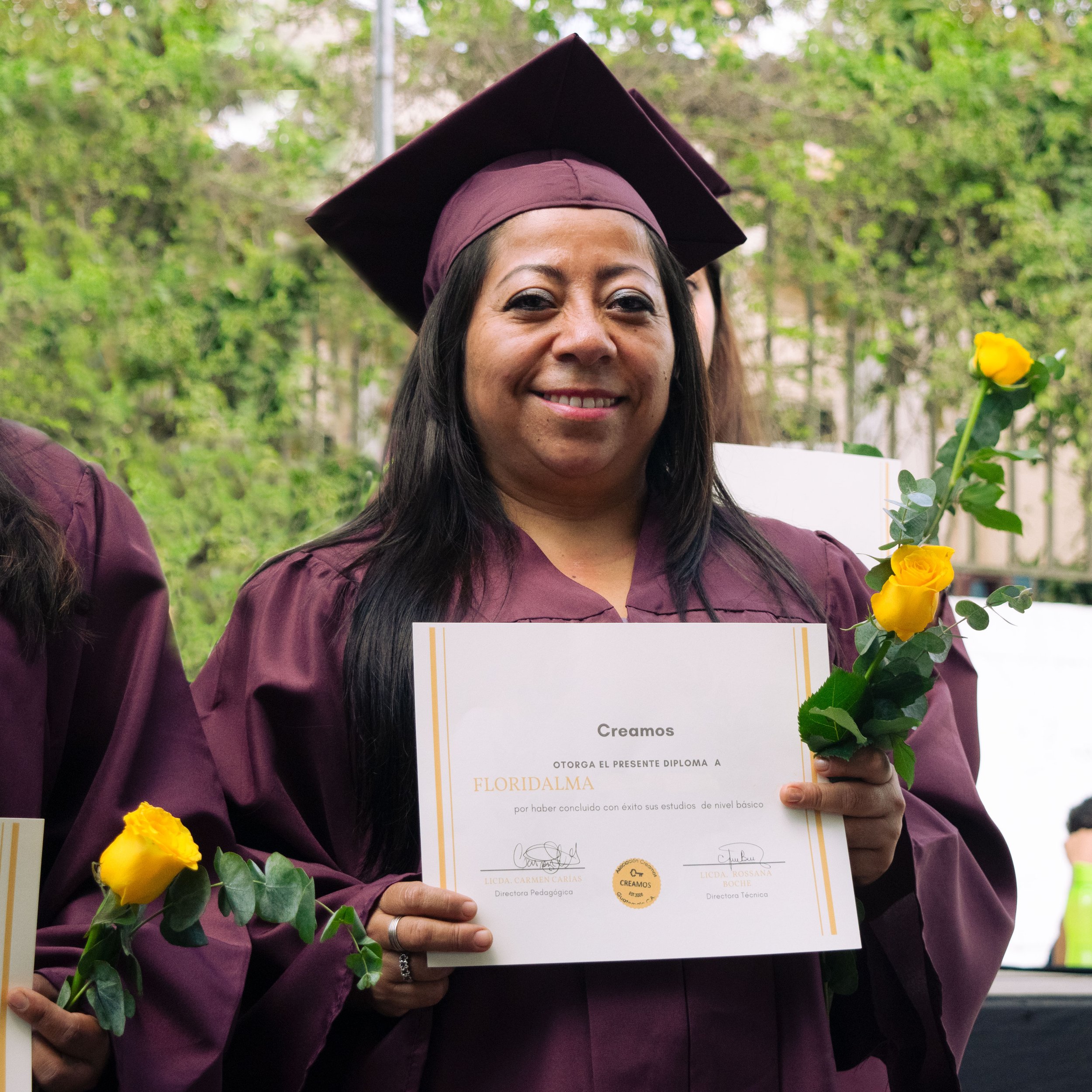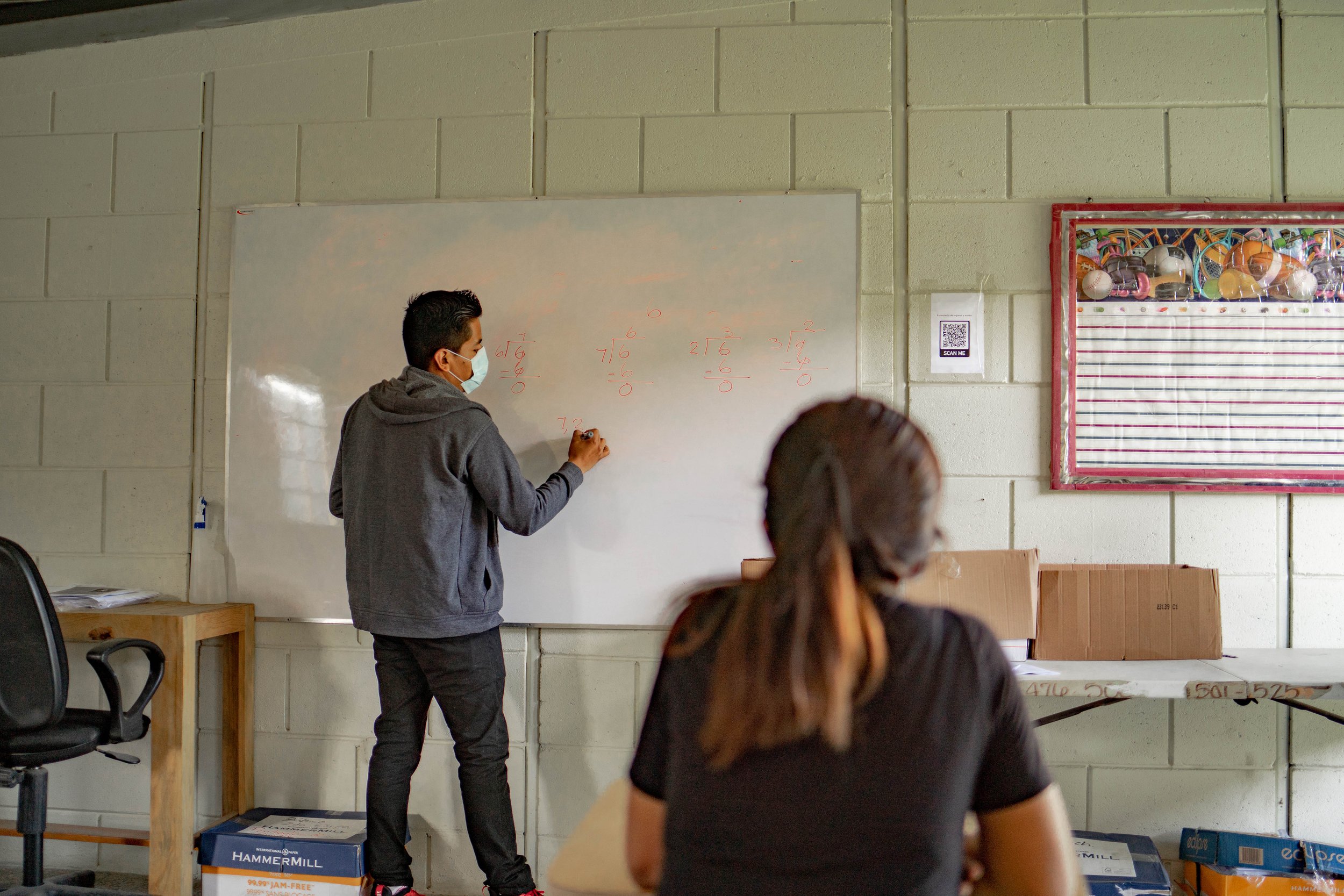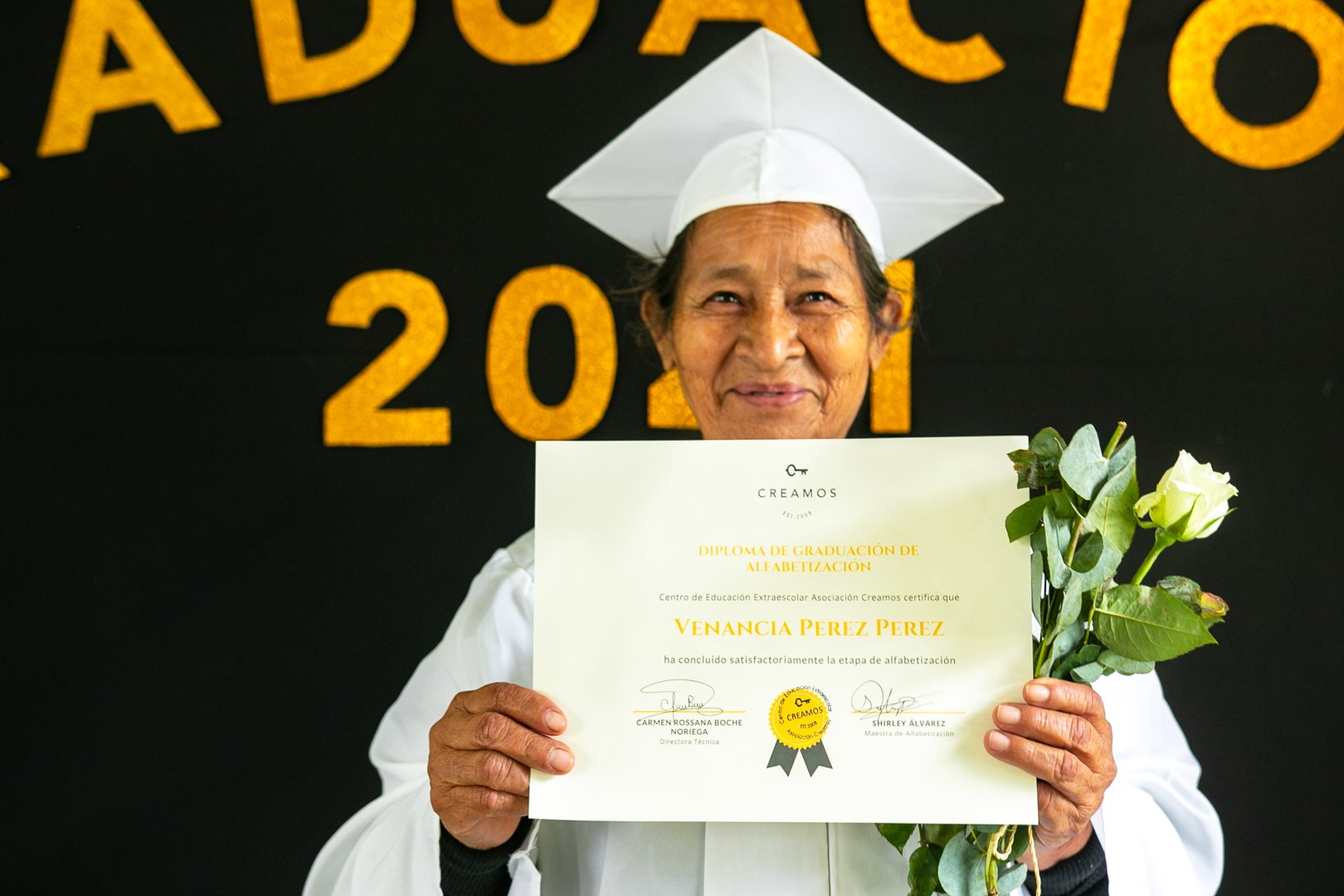Accelerated Education
Creamos’ Accelerated Education Department provides a flexible alternative for the organization’s non-traditional learners - mainly adolescents and adults who dropped out of school at a very young age to work in the garbage dump, in addition to teen mothers - to pursue their high school degree.
The Need
The community surrounding the Guatemala City garbage dump (GCGD) is riddled with chronically low education levels, indicated through a recent community-wide survey demonstrating an average education level of 4th grade for its roughly 40,000 inhabitants. The root causes of this startling statistic are varied in nature, but can largely be attributed to extreme and cyclical poverty, pervasive teen motherhood, and astronomical rates of gender based violence.
Further, many families now living in the garbage dump settlements are victims of internal displacement, as they were forced to flee from their homes in the Guatemalan highlands during the country’s 36 year genocide. Upon arriving in the capital, these families had to rebuild their lives from the ground up, often facing such economic hardship that their children were forced to forgo their studies in order to support their families financially (scavenging for recyclable materials in the garbage dump, panhandling at intersections, or cleaning, cooking, and taking care of younger siblings within the home, etc.)
The Program
Accredited with the Guatemalan Ministry of Education, students in our education program are guided by qualified teaching staff through an accelerated curriculum that allows them to graduate from high school in a total of six years (spending two years in elementary, middle and high school, respectively). This methodology provides a realistic and accessible path for individuals who have fallen well below grade-level standards due to compounding socio-economic injustices. Our program employs a flexible learning model supplemented by free childcare for all students while on campus - two factors that are vital in maintaining high retention rates.

